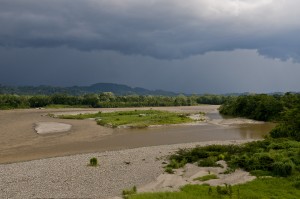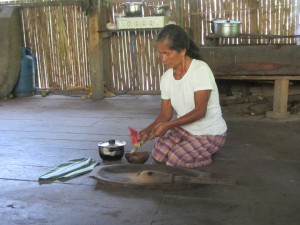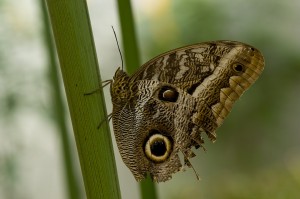Four people initiated the project Selva Viva: Christine and Sigfried von Steiger, as well as Angelika and Remigio Canelos Raimannn. After they first meet in Ecuador in the early nineties the idea formed to launch an animal rescue and reintroduction project and to buy primary rainforest in order to protect it. In 1993 the amaZOOnico was founded thanks to the financing provided by Christine. In the following year the wild animal rehabilitation centre was approved by the Ecuadorian Government. The association for the protection of rainforest Switzerland was founded in 1993. Financed by shares the protected forest Selva Viva was bought and maintained. The Association GSR soon grew to over 100 members with Siegfried von Steiger as president. Angelika and Remigio managed the project in Ecuador. They married in 1994 and raised their two children Jan and Silvia in the beautiful rainforest. As time passed further projects were launched.
- In 1994 the guesthouse Runa Wasi was opened. It was lead by the Kichwa Community and enabled the locals to earn an income.
- In 1999 the first guests were welcomed at the Liana Lodge. Thanks to the Liana Lodge the Canelos Raimann family was able to earn their living. From that point on all the donations went directly to the amaZOOnico project. Christine von Steiger, who is a trained primary school teacher, established the rainforest school: Sacha Yachana Wasi. The classes are held in three languages: Kichwa, Spanish and German. Benefactors in Switzerland enable local students to have a very good education.
- In 2005 a group of former helpers founded the association Padrinos del amaZOOnico. The goal was to support the animal rescue and reintroduction centre and to stay in contact. As the projects grew steadily there were many staff changes.
- From 2002 onwards Olivia Conrads and Douwe Bakker took over leadership of the amaZOOnico project.
- In 2009 they moved on and founded the new animal rescue and reintroduction project in Pucallpa (Peru).
- Meanwhile the most important financers are the School for social matters Marie Curie in Meran, Italy and the Marie Curie Gymnasium in Dresden, Germany. Every year they organize a running event in order to finance maintenance of the rainforest and the wages of the rangers.
In 2011 a tragedy affected the projects: the Raimann family car collided with a bus as they were on the way to their holidays. Angelika Raimann died in that car crash. Angelika was an essential part of all the projects. Right from the beginning she showed enormous enthusiasm and was dedicated to the projects. She lived her dream: `God give me the ability to accept the things I ca to the commitment of all our friends and supporters in Ecuador all the projects could be continued. In 2011 a dormitory was built in Tena, where students from the forest live in supervised accommodation. In the summer of 2013 the projects celebrated their twentieth anniversary. What started as a small animal rescue and reintroduction project has now become a large development project, which includes animal and forest protection as well as ecotourism and schooling. Today many locals earn their living directly or indirectly from these projects. This is the most efficient protection of the rainforest.



